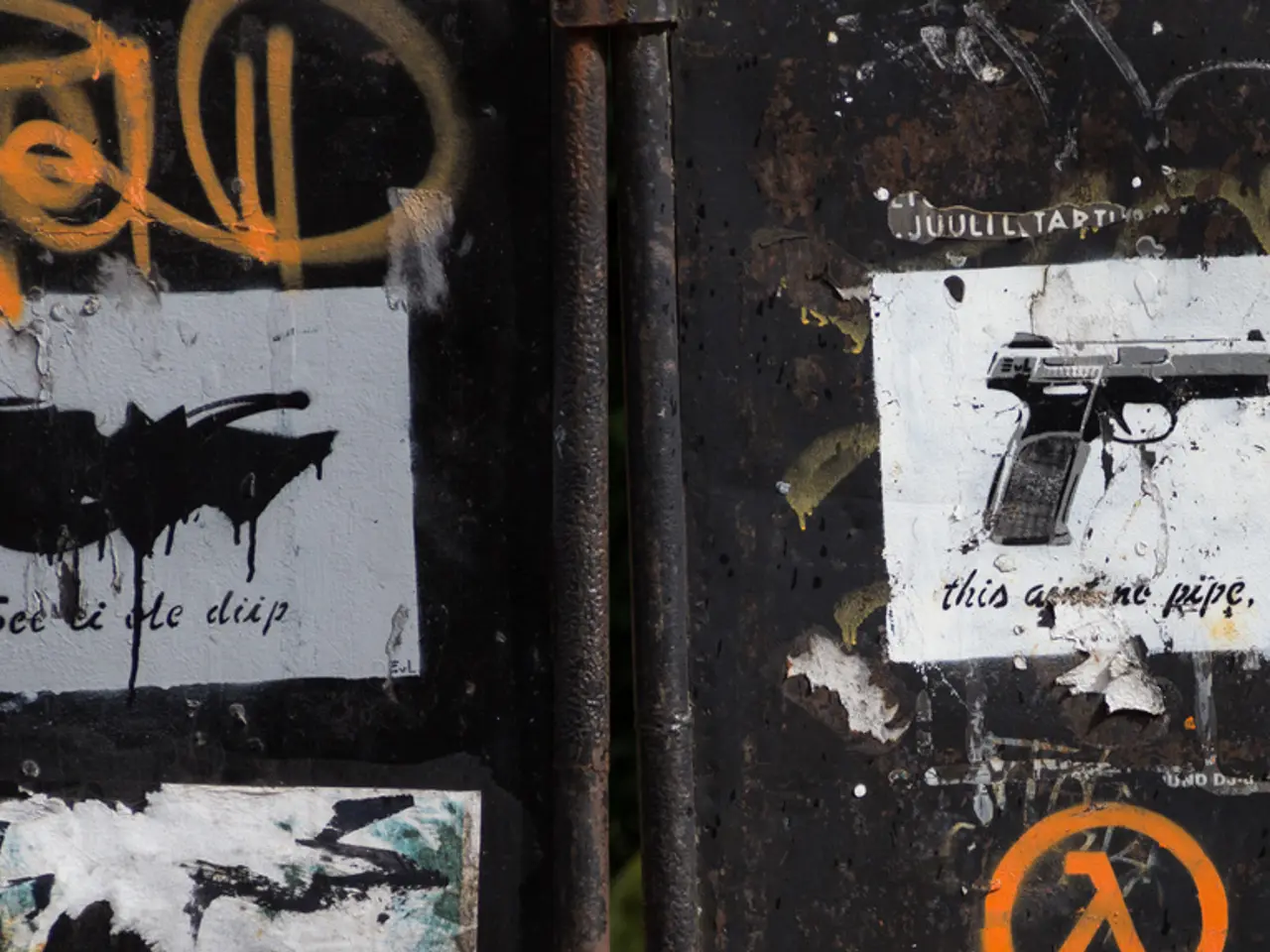Picasso's 'Demoiselles d'Avignon' Originally Inspired by Catalan Art, Not African Art According to Art Expert
In a recent turn of events, a French art detective, Alain Moreau, has published a paper suggesting that Pablo Picasso's groundbreaking painting, "Les Demoiselles d'Avignon," may have been inspired by Medieval church frescoes in the Spanish Pyrenees, rather than African art as previously believed.
The painting, completed in 1907, is renowned for its radical departure from Western artistic tradition, with its five nude women depicted with fragmented bodies and mask-like faces. This unique style has long been attributed to Picasso's engagement with African tribal masks, a claim supported by leading art historians.
However, Moreau argues that the color palette, facial contours, and eyes of the women in "Les Demoiselles d'Avignon" more closely resemble Catalonia's Medieval church paintings. He points to the chirimbolo, a mysterious mark on one figure's face, as drawing inspiration from the abstract facial markings found in Catalan Christian art.
Moreau's research challenges the long-held belief that African art was the primary inspiration for "Les Demoiselles d'Avignon." It is important to note that Picasso visited Paris's first anthropological museum, the Musée d'Ethnographie du Trocadéro, in June 1907, where African masks were exhibited. However, Moreau's paper asserts that the African mask displayed alongside "Les Demoiselles d'Avignon" in the 1939 retrospective at the Museum of Modern Art was not in Europe until 1935, years after the painting was completed.
Picasso himself seemed to distance "Les Demoiselles d'Avignon" from African art, stating in a 1920 interview, "Black art? I don't know it." Moreau retraced Picasso's travels, including a possible detour on the way to Gósol, Spain, in 1906, as part of his research. He suggests that the inspiration for "Les Demoiselles d'Avignon" can be found in the now-lost frescoes of La Vella de Sant Cristòfol in Campdevànol and the Romanesque murals of Sant Martí de Fenollar.
While Moreau's theory is gaining attention, it has not yet been widely accepted among scholars who emphasize African primitivism as the primary source of Picasso’s innovation in the work. The debate serves as a reminder of the ongoing process of art interpretation and the importance of continued scholarly inquiry.
[1] Moreau, Alain. (2021). "Les Demoiselles d'Avignon: A Reassessment of Its African and Medieval Influences." Bulletin of the Reial Acadèmia Catalana de Belles Arts Sant Jordi.
[2] Herrera, J. (2021). "New Theory Suggests Picasso's 'Les Demoiselles d'Avignon' Was Inspired by Medieval Art, Not African Art." The Times of London.
[3] Schama, S. (2007). "The Power of Art: Picasso's 'Les Demoiselles d'Avignon'." The New Yorker.
[4] Gertsch, R. (2013). "Picasso's 'Les Demoiselles d'Avignon': A Cubist Revolution." The Art Newspaper.
- Alain Moreau's paper, published in the Bulletin of the Reial Acadèmia Catalana de Belles Arts Sant Jordi, suggests that Pablo Picasso's painting, "Les Demoiselles d'Avignon," was influenced by Medieval church frescoes in the Spanish Pyrenees, rather than African art.
- The debate regarding the primary influence on Picasso's "Les Demoiselles d'Avignon" has recently gained traction, with Alain Moreau asserting that Medieval art may have played a significant role, contrasting previous beliefs about African art.
- In his research, Alain Moreau has found similarities between the color palette, facial contours, and eyes of the women in "Les Demoiselles d'Avignon" and Catalonia's Medieval church paintings, pointing to the chirimbolo as evidence of this influence.
- Although Picasso visited Paris's anthropological museum, where African masks were exhibited, in June 1907, Moreau's paper argues that an African mask displayed alongside "Les Demoiselles d'Avignon" in the 1939 retrospective at the Museum of Modern Art was not in Europe until 1935, years after the painting was completed.
- The painting "Les Demoiselles d'Avignon" is a celebrated example of modern art, known for its departure from Western artistic tradition and its unique style, which is often credited to Picasso's engagement with African tribal masks.
- The ongoing discussion about the inspiration for Picasso's groundbreaking painting serves as a reminder of the dynamic nature of art interpretation and the importance of continued scholarly inquiry, with collectors, curators, and enthusiasts alike eagerly awaiting the next significant development in this intriguing debate.








